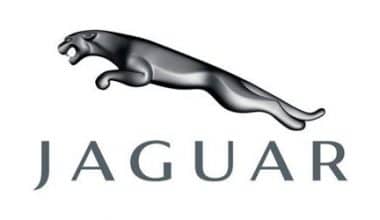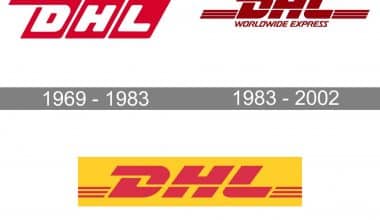Caterpillar is a well-known manufacturer of agricultural and construction heavy vehicles. The company is a global behemoth in its own right, managing 25 major production plants worldwide. Plus, half of its revenue comes from within the United States, with the other half coming from the rest of the world.
Caterpillar returned to profitability in the mid-1980s, following a tumultuous period in which the company lost nearly $1 billion between 1982 and 1984. But how were they able to pull this off? And more importantly, how did they develop one of the most recognizable logos in the auto industry? Well, let’s find out…
The Evolution of the Caterpillar Logo
The visual identity of the machinery manufacturer, Caterpillar, has a long and colorful history. The evolution of its logo reflects the brand’s progress and growth, demonstrating how it grew from a small business to a massive international player.
Some logos were graphical representations of the company’s name, while others were utterly unrelated to the company’s name but represented a solid and professional brand.
1925 — 1931
The company’s first logo was a wordmark in color variations — black on white or red on gray. The inscription was waved, resembling a caterpillar’s silhouette, and the split ends of the letters represented the creature’s legs. The logo was only used for a short time and was only the first attempt in a long line of logotypes and emblems.
1931 — 1932
The company held its first redesign in 1931. The wave logo was replaced by a more strict and traditional one. The red title case inscription in a stylish serif typeface with rounded horizontal bars of both letters “R” was inspired by a standard font, such as NoraPen Medium or Gianotten Pro, but with some lines changed.
The red and white color scheme represents the young company’s power, passion, and energy and willingness to grow and provide new products to its customers.
1932 — 1939
In 1932, the color of the logotype was changed to black. And from then until 1957, the company had three different versions of the inscription, all in monochrome and roughly the same style, but by 1957, the note had gained a narrower and more compact sans-serif font, which looked modern and robust. The font was similar to Polyphonic condensed, but all horizontal bars were shortened.
1939 — 1941
Unless they compared the two versions side by side, most customers would have missed the update. To begin with, the letter proportions were slightly different. What was even more noticeable was that the rounded ends were often replaced with squarish ones.
1941 — 1957
The overall style was kept the same, but the shape of the glyphs was changed. The letters had become narrower, and there was more space between them.
1957 — 1967
The 1957 redesign completely altered the look of the Caterpillar logo. The black inscription in all capitals was now written in an extra-bold sans-serif typeface with thick lines and distinct contours, similar to Filmotype Ford. The lettering appears powerful and professional, reflecting the company’s authority and expertise, while the monochrome color palette represents the group’s traditional approach and values.
1967 — 1989
The first logo was added to the company’s visual identity with the redesign in 1967. The logotype was now flanked by a moss-green square with a white circle in the center. The circle had two intersecting lines: one vertical, dividing it into two halves, and one horizontal, separating the right half in half. Three white segments formed a stylized letter “C” on the green background.
The wordmark is still written in all caps but in a different typeface. The inscription is now in a smooth and elegant sans-serif font similar to Eurostile Unicase Pro Regular.
The logo, placed to the left of the logotype in some versions, was executed in a black-and-white color palette, perfectly balancing the lettering.
Today’s Caterpillar logo was created in 1989.
The logo we know today was created in 1989. It features an entirely new wordmark with a delicate yet powerful graphical element inside. The inscription is written in all capitals in a bold and clean sans-serif typeface similar to CG Triumvirate Inserat and Nimbus Sans L Cond black.
The broad yellow triangle covers the bottom parts of the first three letters, adding a bright accent to the logo and making it unique and recognizable.
The company uses only “CAT” lettering with a triangle in a black, white, and yellow color palette for the icon, symbolizing strength, confidence, and energy.
Elements of Caterpillar Logo Design
The Cat logo is relatively new. When the company was founded in 1925, the logo resembled its namesake, the Caterpillar. However, from 1931 to 1967, the company took on a more traditional, straightforward form. The stylized C was introduced in 1967 in a more fashionable design and remained in use until 1989 when the latest CAT and Triangle forms were introduced. This shift to a more recognizable symbol was possibly an attempt to capitalize on the booming construction market at the time.
Caterpillar Emblem
In 1957, the company finally settled on a bold sans-serif typeface in all capitals that conveyed solidity and dependability. The font was updated in 1967, and a new company emblem (Block C) was added to the left of the lettering.
Caterpillar Symbol
Caterpillar’s current logo was designed in 1989 and consisted of the entire company name and a yellow triangle buttressing the “A.” This logo is joined by a shorter version, the CAT logo. The use of the letters “CAT” implies that consumers are generally aware that “CAT” stands for “Caterpillar.”
Caterpillar Font
The current logo employs a typeface from the Helvetica font family. The font in question is Helvetica Compressed by Eduard Hoffmann and Max Miedinger or Helvetica Inserat Roman by Max Miedinger.
Caterpillar Color
The brand’s use of black and yellow has become iconic, serving as the CAT logo’s distinguishing feature. Until 1989, earlier logotypes used some red but mostly a monochrome black-and-white palette.
Corporate Symbol
Surprisingly, the company did not have a formal corporate logo until 1967. The so-called Block C emblem was introduced at that time. It did not include the company name; it was a stylized white “C” on a black background. The letter was divided into three sections (half a circle and two-quarters of a circle).
Caterpillar’s History
C. L. Best Tractor Company and Holt Manufacturing Company merged in 1925 to form the Caterpillar Tractor Company. On the other hand, the Caterpillar name had been in use for many years before the merger. In the early 1900s, Benjamin Holt sought to improve the traction and mobility of the steam tractors he was producing. So, instead of wheels, he experimented with wooden tracks bolted to chains.
The new invention worked flawlessly, so much so that one observer remarked that the machine crawled along like a caterpillar. Holt agreed and even went so far as to name his invention “Caterpillar,” which he later trademarked. In 1986, Caterpillar Tractor Company changed its name to Caterpillar Inc.
Caterpillar’s Early Achievements
While Holt was instrumental in developing the industrial tractor decades before the Caterpillar Company was founded in 1925, several remarkable achievements occurred after the new corporation’s formation. Some notable examples can be found in the 1930s, when Caterpillar machinery was used in major construction projects such as the Grand Coulee Dam, the Golden Gate Bridge, and the Mississippi Levee project. With over 50,000 military tractors produced, the company’s machines also aided the United States’ military efforts during World War II.
Caterpillar’s Growth in the 1950s
Caterpillar began expanding into foreign markets after World War II. CAT machines were used to build a 10.5-mile highway through Venezuela’s Andes Mountains in the early 1950s. Soon after, the Indian government followed suit, purchasing 93 CAT machines to aid the nation’s road network projects. CAT machines have come to the aid of the US military during Operation Deep Freeze III in the late 1950s in some of the most geographically challenging locations, such as Antarctica.
Caterpillar is still the world’s leading manufacturer of heavy industrial equipment. As the company seeks new ways to serve its customers, it has successfully entered new industries such as insurance and financial products.
What Exactly Does the Caterpillar Logo Represent?
On the logo, the word CATERPILLAR represents an American corporation. The yellow triangle in front of CAT is purely decorative. It conveys movement, stability, and innovation.
What is the triangle in the CAT logo?
A yellow triangle appears in the CAT logo. It isosceles: two sides of equal length with a broad base to provide stability.
Is Caterpillar and CAT the same company?
Yes, they are the same company. Caterpillar Corporation’s flagship brand is CAT.
What does CAT stand for, Caterpillar?
Caterpillar’s flagship brand, CAT, sells the majority of its products. For starters, it is well-known for its specialized vehicles and premium engines.
What does the Caterpillar logo mean?
Caterpillar’s bold uppercase “CAT” lettering set in a contemporary sans-serif font serves as a visual representation of the company’s self-assurance and tenacity. Accompanying the lettering is a bright yellow triangle, which has come to represent expansion and development in the company’s line of business. The composition of the badge is not particularly complex; however, it gives off an impression of great ferocity and vitality.
Related Articles
- Best Pet Affiliate Programs In 2023: Top 10 Picks
- BEST LARGE CAP STOCKS IN 2023
- 3M Logo: What is the History? All You Need!!!
- San Francisco 49ers Logo: What Does it Represent?
- 2023 BEST PET INSURANCE FOR CATS: Detailed List & Guide
- Iron Man Logo: The Evolution & What It Really Symbolizes
- PROJECT MANAGEMENT TRIANGLE: All You Should Know






